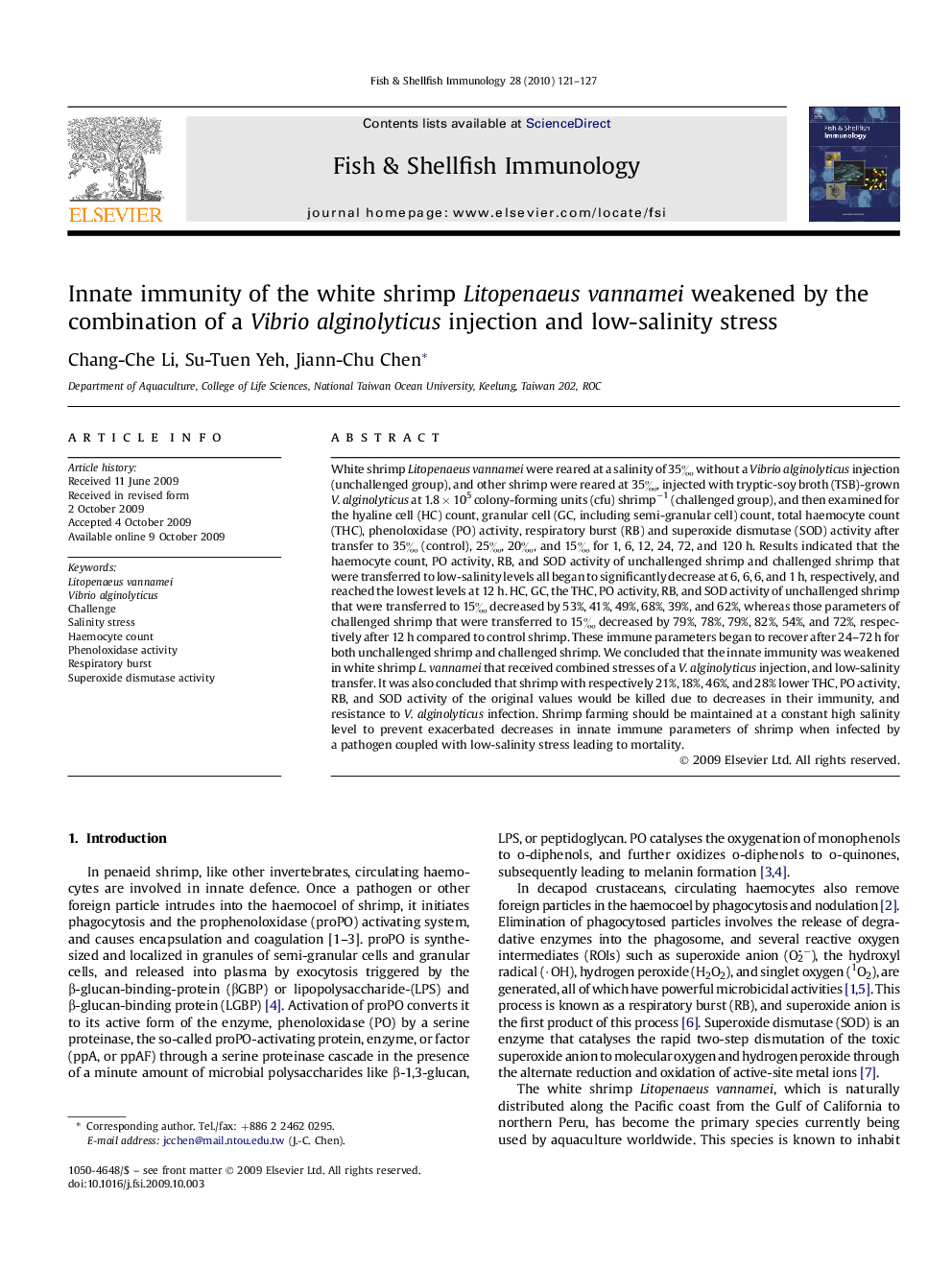| کد مقاله | کد نشریه | سال انتشار | مقاله انگلیسی | نسخه تمام متن |
|---|---|---|---|---|
| 2432922 | 1106810 | 2010 | 7 صفحه PDF | دانلود رایگان |

White shrimp Litopenaeus vannamei were reared at a salinity of 35‰ without a Vibrio alginolyticus injection (unchallenged group), and other shrimp were reared at 35‰, injected with tryptic-soy broth (TSB)-grown V. alginolyticus at 1.8 × 105 colony-forming units (cfu) shrimp−1 (challenged group), and then examined for the hyaline cell (HC) count, granular cell (GC, including semi-granular cell) count, total haemocyte count (THC), phenoloxidase (PO) activity, respiratory burst (RB) and superoxide dismutase (SOD) activity after transfer to 35‰ (control), 25‰, 20‰, and 15‰ for 1, 6, 12, 24, 72, and 120 h. Results indicated that the haemocyte count, PO activity, RB, and SOD activity of unchallenged shrimp and challenged shrimp that were transferred to low-salinity levels all began to significantly decrease at 6, 6, 6, and 1 h, respectively, and reached the lowest levels at 12 h. HC, GC, the THC, PO activity, RB, and SOD activity of unchallenged shrimp that were transferred to 15‰ decreased by 53%, 41%, 49%, 68%, 39%, and 62%, whereas those parameters of challenged shrimp that were transferred to 15‰ decreased by 79%, 78%, 79%, 82%, 54%, and 72%, respectively after 12 h compared to control shrimp. These immune parameters began to recover after 24–72 h for both unchallenged shrimp and challenged shrimp. We concluded that the innate immunity was weakened in white shrimp L. vannamei that received combined stresses of a V. alginolyticus injection, and low-salinity transfer. It was also concluded that shrimp with respectively 21%, 18%, 46%, and 28% lower THC, PO activity, RB, and SOD activity of the original values would be killed due to decreases in their immunity, and resistance to V. alginolyticus infection. Shrimp farming should be maintained at a constant high salinity level to prevent exacerbated decreases in innate immune parameters of shrimp when infected by a pathogen coupled with low-salinity stress leading to mortality.
Journal: Fish & Shellfish Immunology - Volume 28, Issue 1, January 2010, Pages 121–127